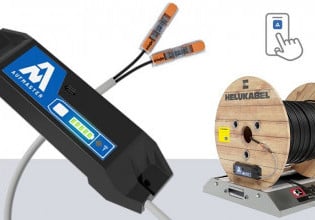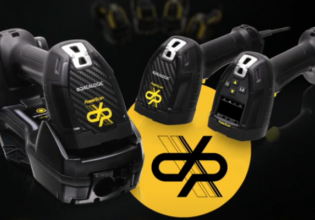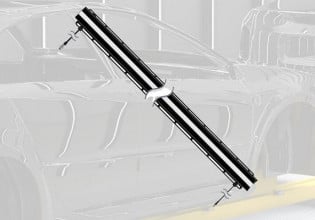Types of Industrial Remote Monitoring Solutions and Processes
Learn about the different types of industrial remote monitoring and some of the various remote monitoring processes used in industry.
Communication in today’s world is fast, reliable, and has found its way into many manufacturing fields. One advantage of instantaneous communication is remote monitoring.
Remote monitoring can monitor numerous processes such as leaks, maintenance, vibration, emissions, data, pressure, voltage, and other preventable issues. Many industrial manufacturers focus on network-compatible devices to allow easy remote monitoring with other components and monitoring systems.
What is Remote Monitoring?
Remote monitoring tracks a machine's real-time data and performance without the user being physically present at the equipment's site. Remote monitoring helps technical personnel in many ways because industrial and manufacturing units are not limited to single-located facilities; they often comprise more than one site.
Remote monitoring also enables the manufacturer to maintain the necessary record of different processes more efficiently. Examples include record safety and retention, which can be difficult in traditional paper-based systems.
Types of Industrial Remote Monitoring
Remote monitoring is implemented in various industrial applications and monitors several process parameters. These are fed to algorithms and analytics, yielding information contributing to the facility’s overall performance improvement.

Remote sensing can send information to a control center. Image used courtesy of Siemens
Some areas where remote monitoring best benefits manufacturers are the manufacturing process, maintenance monitoring, emissions monitoring, SCADA configuration, and data recovery.
Manufacturing Process
Remote monitoring enables technical persons to visualize a real-time manufacturing process by reading data from sensors throughout the facility. These sensors give information about process variables and can be combined to have detailed manufacturing insight. It also includes alarm management that activates an alarm if the process faces an abnormal condition.
In a filling machine, remote monitoring can track the remaining containers, the machine's actual speed, and how much liquid is remaining. The alarm system can be set up for problems related to the motor or a filling pump.
Maintenance Monitoring
Maintenance monitoring determines the machine or component's expected operation life and can predict the machine's subsequent breakdown.
Remote monitoring can successfully implement maintenance strategies such as preventive and predictive maintenance. It can record the performance output of a component combined with other parameters such as installation date. Rated output can yield meaningful data regarding lifespan, output efficiency, and breakdown status.
Emissions Monitoring
Emissions sources are commonly at hard-to-access locations. Concerned technicians may not be able to access the emissions sources during operations due to high temperatures, such as in boilers and power sources. This affects the quality of data monitoring and limits the frequency of data collection.

Emerson Rosemount Continuous Gas Emissions Analyzers. Image used courtesy of Emerson [PDF]
Dedicated sensors collect the emissions data installed at the emissions site. With its analytics, technicians can analyze emissions data for early warnings, such as in a boiler’s fuel combustion system.
SCADA Configuration and Data Recovery
Remotely monitor SCADA components such as human-machine interfaces (HMIs) and programmable logic controllers (PLCs). HMIs and PLCs often need troubleshooting; for example, during a software upgrade or program re-installation.
Traditionally, the engineer or technician manually approaches the machine and component’s compartment with a computer or laptop with software and communication cable to interface with the component. This consumes time for the arrangements of resources, and production faces breakdown.
With remote monitoring, the relevant persons can easily access SCADA components by performing the activity from their workstations.
Different Industrial Remote Monitoring Processes
Remote monitoring is not limited to a single technology, field, or industry. A single machine or process contains different monitoring devices and can be successfully monitored to deliver the results. A few examples include pressure, vibration, voltage and current, and other variables.
Pressure
Pressure monitoring is essential for HVAC-related functions such as clean room and air handling units (AHU). The pressure in these systems primarily monitors airflow across purified and contaminated areas and checks on filters' integrity.
Pressure remote monitoring allows continuous monitoring, as the system’s location can be in hard-to-access areas such as the technical floor for AHUs. The pressure status of any room is a critical value and should not deviate from the standard values. Otherwise, these shifted values indicate disturbance in the airflow pattern, contaminating the controlled area.
These devices' pressure values can be fed to analytics, which presents the pressure profile for easy monitoring and generates an alarm when deviated from the set values. This, in turn, activates maintenance procedures to troubleshoot the problem.
Vibration
Remote monitoring of Vibration indicates the health of mechanical and rotating components such as motors and Compressors. The vibration monitoring is implemented as a Maintenance strategy predicting the breakdown before it happens. An effective maintenance strategy is known as Predictive Maintenance.

An example vibration monitoring sensor. Image used courtesy of Banner Engineering
Vibration measurements are often required frequently or continuously. The vibration measurement systems are usually located at hard-to-access locations and are difficult to implement continuously during operation.
The data from the vibration sensor are collected remotely and then fed to analytics. The analytics then keeps historical trend, which is readily available for the analysis.
Analytics also contains alarms that generate whenever the value exceeds the normal limits.
Voltage and Current
Voltage and current measurements are crucial parameters in an industrial environment and represent electric power’s condition. Nowadays, manufacturers are moving toward self-generating electric power.
Electricity measurements indicate variables critical for power generation equipment such as health, connected load condition, transmission line, and wiring. This also helps detect any problems with the associated components such as the transformer, switchgear systems, or electrical panels.

Remote analysis can help determine issues within the control system. Image used courtesy of Siemens
Analytics uses these values to calculate and measure the performance and activates alarms when an abnormality occurs.
Process Variables
Manufacturing process variables monitor a machine's essential operation and explain how it behaves according to different production steps. Some parameters useful for implementing remote monitoring include pulse counts, run times, and alarms.
The pulse-count function refers to measuring output. These are particularly essential where the output is countable, such as in a filling machine where the filled containers are calculated, or in blister packing machines where the blister is counted. Pulse counts are monitored remotely for output tracking and product planning in response to demand by the supply chain department. It also prevents mistakes in data, such as human error in traditional paper-based systems.
Run times record total machine running hours with the production process. These production hours are needed for various purposes, such as comparing part failure frequency with machine run hours; output with total run hours daily, weekly, or monthly; and planning preventive maintenance after specific hours of machine operation hours.
These parameters are also monitored remotely and automatically fed to analytics for automatic algorithm processing. The results are then visible on the relevant department screen's analytics dashboards.
Alarms can also be monitored remotely and can help the maintenance department to promptly respond. The central dashboard displays the type of alarm and the area where the problem has occurred. The record of alarm data is also saved for analyzing purposes in a graphical or report format.
Industrial environments utilize remote monitoring on a daily basis for a multitude of processes. Maintenance, emissions, and data only name a few. Keep an eye out for the following remote monitoring technical series, where we will discuss types of monitoring instruments and protocols.






